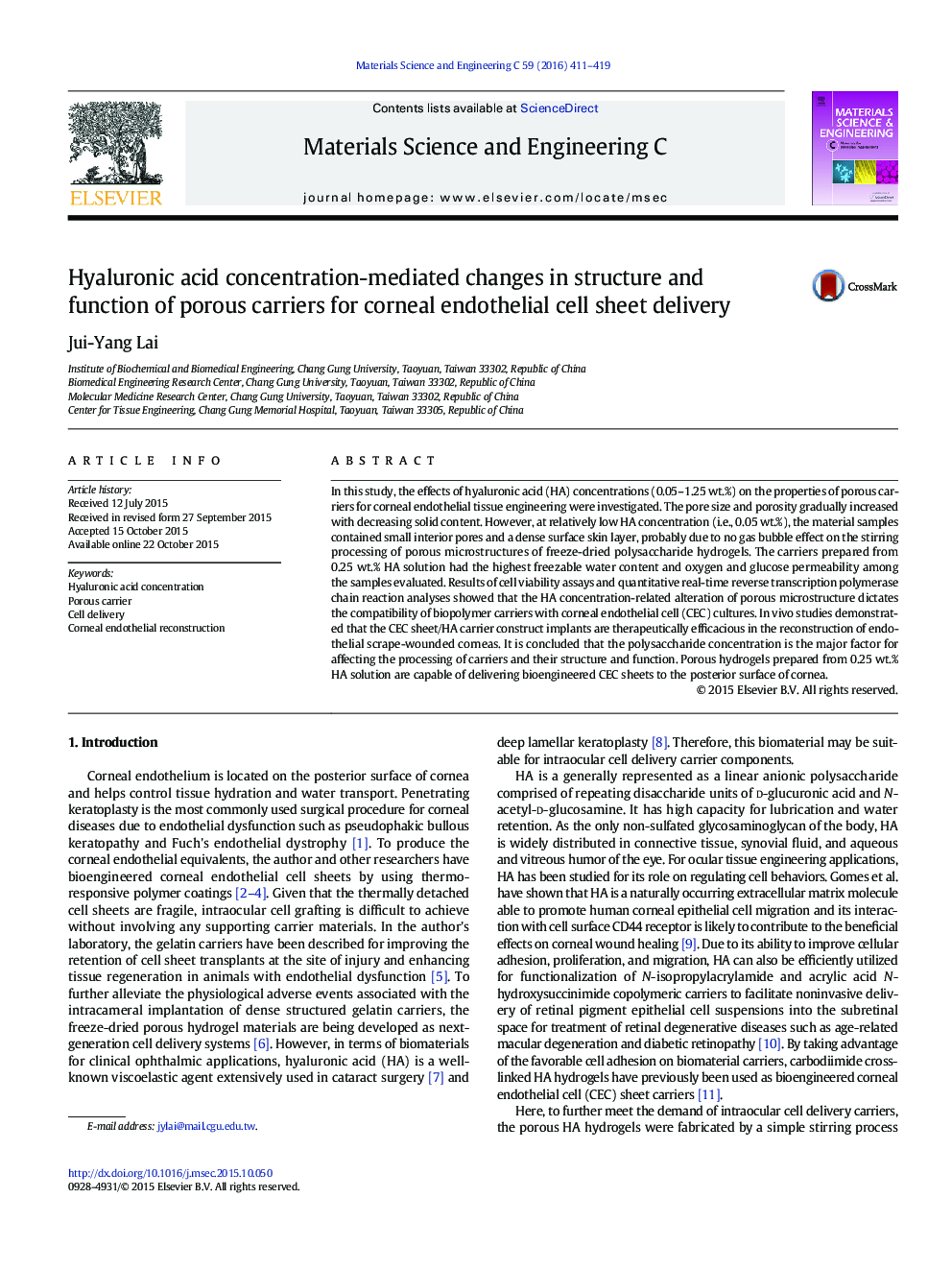| Article ID | Journal | Published Year | Pages | File Type |
|---|---|---|---|---|
| 7868709 | Materials Science and Engineering: C | 2016 | 9 Pages |
Abstract
In this study, the effects of hyaluronic acid (HA) concentrations (0.05-1.25Â wt.%) on the properties of porous carriers for corneal endothelial tissue engineering were investigated. The pore size and porosity gradually increased with decreasing solid content. However, at relatively low HA concentration (i.e., 0.05Â wt.%), the material samples contained small interior pores and a dense surface skin layer, probably due to no gas bubble effect on the stirring processing of porous microstructures of freeze-dried polysaccharide hydrogels. The carriers prepared from 0.25Â wt.% HA solution had the highest freezable water content and oxygen and glucose permeability among the samples evaluated. Results of cell viability assays and quantitative real-time reverse transcription polymerase chain reaction analyses showed that the HA concentration-related alteration of porous microstructure dictates the compatibility of biopolymer carriers with corneal endothelial cell (CEC) cultures. In vivo studies demonstrated that the CEC sheet/HA carrier construct implants are therapeutically efficacious in the reconstruction of endothelial scrape-wounded corneas. It is concluded that the polysaccharide concentration is the major factor for affecting the processing of carriers and their structure and function. Porous hydrogels prepared from 0.25Â wt.% HA solution are capable of delivering bioengineered CEC sheets to the posterior surface of cornea.
Keywords
Related Topics
Physical Sciences and Engineering
Materials Science
Biomaterials
Authors
Jui-Yang Lai,
